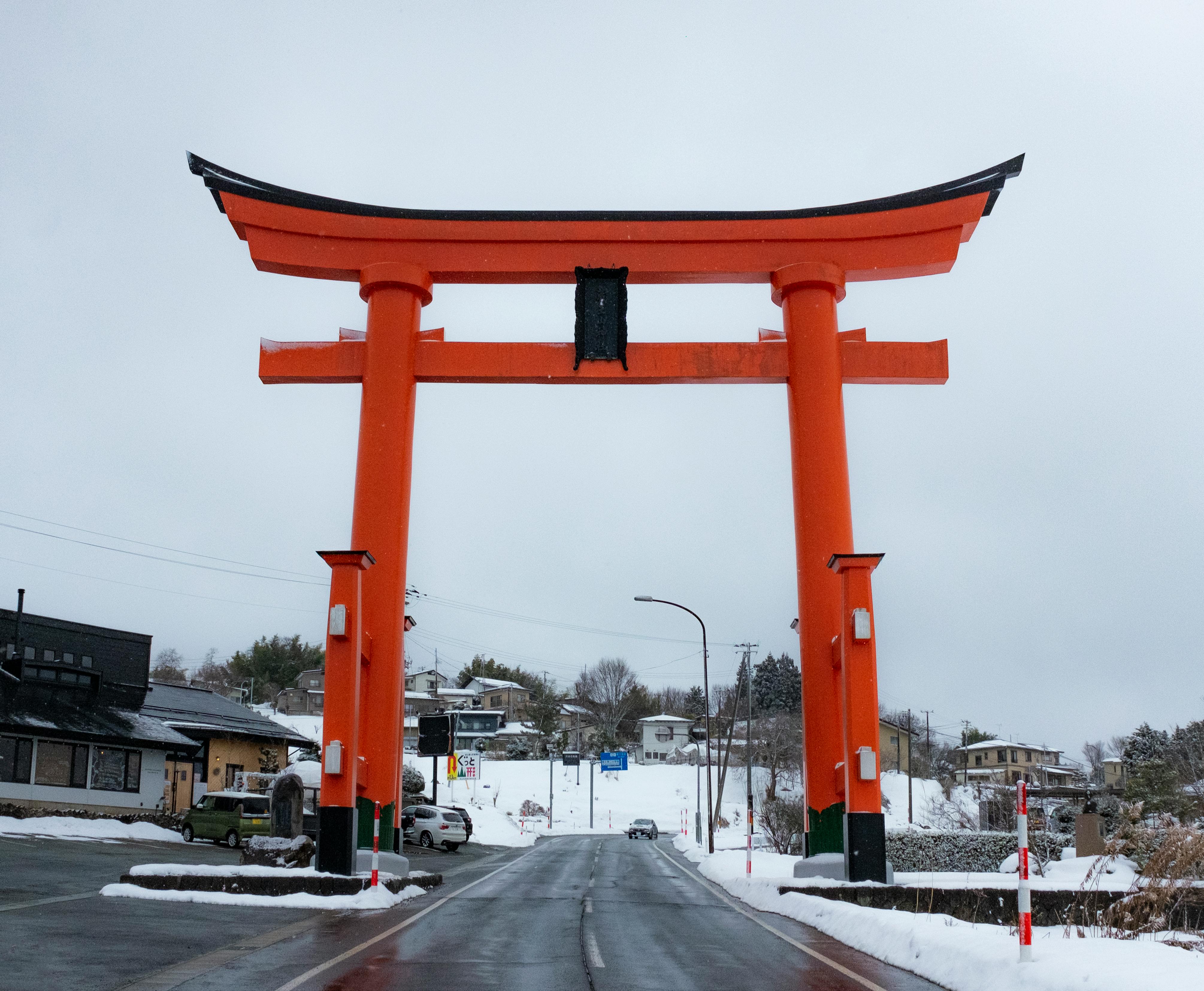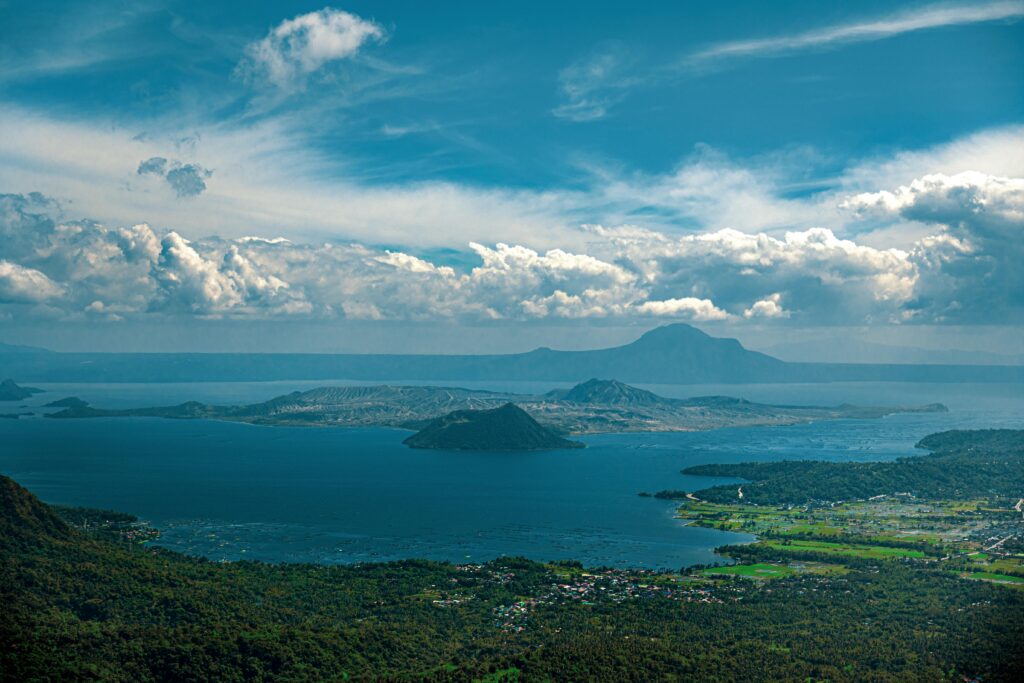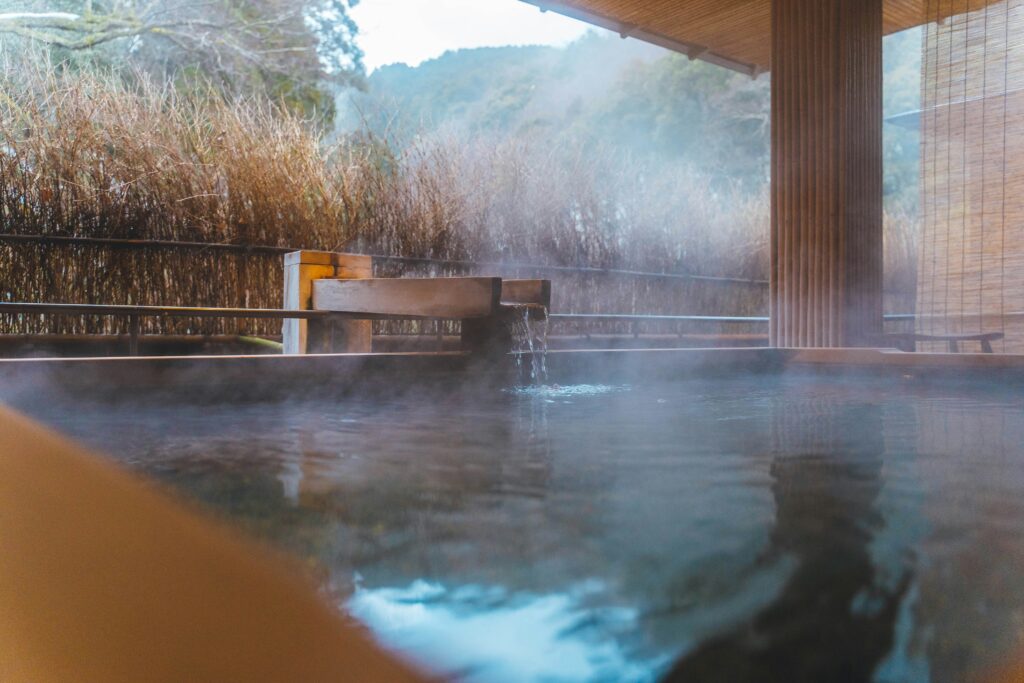TL;DR
Japan in December offers Filipino travelers snowy landscapes, dazzling holiday lights, and unique winter experiences with proper preparation for comfort and safety.
- Dress in layers with waterproof shoes, gloves, and scarves.
- Balance cash and digital payments for convenience and emergencies.
- Monitor weather forecasts and transport advisories to avoid delays.
- Enjoy onsen visits, skiing, snow festivals, and seasonal cuisine.
Every December, Japan transforms into a winter wonderland that captivates Filipino travelers. Snow-covered streets, dazzling illuminations, and cozy onsen towns create a seasonal charm you won’t find in the Philippines. Whether you’re a first-time visitor or a seasoned Japan traveler, the landscapes, traditions, and winter-only experiences make December one of the most magical months to visit.
This guide outlines the essential things Filipino travelers must know—weather, etiquette, transportation, connectivity, and more—so you can explore Japan comfortably, confidently, and fully prepared.
7 Winter Tips for Filipino Travelers Visiting Japan in December
Traveling to Japan in December involves more than packing coats. Sub-zero temperatures, fast-changing weather, and unique cultural norms can surprise first-time visitors. These practical tips cover everything from visa preparation to onsen etiquette, ensuring a smooth, stress-free trip.
1. Start your Japan visa process early
The Japanese visa application process for Filipino tourists in 2025 is more streamlined, with options to apply via accredited travel agencies, the new Japan Visa Application Centre (JVAC), or the Japan e-Visa for eligible single-entry tourists.
Ensure your application is complete and consistent; any missing or contradictory documents can lead to immediate rejection. Key requirements include:
- Passport with at least six months’ validity
- Bank certificate and statements
- Daily itinerary
- Proof of accommodation
- Employment or business documents
- Recent photo following Japan’s specifications
Processing typically takes five to seven working days, but peak seasons (December, March–April) may extend this to several weeks. Submit your application 60–75 days before departure to avoid last-minute delays. Regularly check Embassy updates, especially regarding JVAC and e-Visa rules, to ensure a smooth process.
2. Dress properly for sub-zero temperatures
December marks true winter in Japan, with temperatures varying by region. Hokkaido can drop from 1°C to -5°C with heavy snowfall, while Tokyo and Kyoto stay milder at 5°C–10°C with occasional snow. Mountainous areas often fall below 0°C, featuring deep snow and icy terrain.
Strategic layering keeps you warm outdoors and prevents overheating indoors:
- Base Layer: Thermal undergarments (like Heattech) to retain body heat
- Mid-Layer: Sweaters, fleece, or down vests for insulation
- Outer Layer: Heavy, insulated, or waterproof jackets for wind and snow protection
- Accessories: Scarf, beanie, and waterproof gloves.
- Footwear: Waterproof boots with good grip for icy surfaces.
- Emergency Warmth: Hand or body warmers (kairo packs) for added heat outdoors.
Layering allows you to adapt comfortably to sub-zero streets, heated trains, and indoor spaces throughout your winter trip.
3. Expect transportation changes due to winter weather
Japan’s rail system is highly reliable, but heavy snow and severe winter weather can still cause delays or suspensions, especially in northern and mountainous regions:
- Hokkaido & Tohoku: Cities like Sapporo, Aomori, and Sendai often experience disruptions due to snow and strong winds.
- Mountain Passes: Routes through the Japanese Alps (e.g., Nagano) and some Sea of Japan coastlines may close temporarily.
- Local Lines: Smaller, conventional trains are more prone to delays than the Shinkansen.
Build flexibility into your itinerary and avoid relying solely on fixed timetables. Check official updates via JR status pages, Google Maps, or the JR-EAST app for the most accurate real-time information. Always allow extra travel time for airports, Shinkansen connections, or scheduled tours.
Download offline maps in advance, as cellular signals may drop during storms or in tunnels. Learning basic Japanese phrases like ressha chien (train delay) or unten mi-awase (operations suspended) can help you navigate disruptions efficiently.
4. Secure reliable connectivity
Reliable internet is essential for winter travel in Japan, enabling real-time train updates, weather alerts, and translation tools. Filipino travelers have several convenient options:
- eSIM: Instant activation upon landing, no device to carry or return. Requires compatible, unlocked smartphones.
- Pocket WiFi: Stable connection for multiple devices, ideal for families or groups. Needs prepaid reservation and airport pickup/return.
- Local Tourist SIMs: Affordable data plans from carriers like SoftBank or Docomo. Requires physical SIM swap; no local phone number.
A stable connection helps you adapt quickly, reducing stress and ensuring safety during winter travel disruptions.
5. Prepare for a mix of cash and digital payments
Japan is technologically advanced but not fully cashless; around 40% of payments are digital. To navigate smoothly, use a mix of cash and electronic options:
- IC Cards: Suica, Pasmo, Icoca (for transit, vending machines, and convenience stores)
- Credit/Debit Cards: Accepted at hotels, department stores, and major chains
- Mobile/QR Payments: PayPay, Line Pay (may require a Japanese bank account)
Outside major cities, cash is often the only option. Small eateries, market stalls, shrines, temples, gardens, souvenir shops, certain taxis, and some vending machines accept only cash. Carry a mix of ¥1,000 bills and coins, and use ATMs like 7-Eleven or Japan Post Bank to withdraw extra cash as needed. This balance ensures flexibility and convenience throughout your trip.
6. Follow proper etiquette for winter activities and heated indoor spaces
Understanding local customs ensures a respectful and comfortable trip, especially in winter when indoor spaces are heavily heated (around 20–23°C).
- Remove Outerwear: Take off coats and jackets in homes, offices, restaurants, and on trains to avoid overheating and conform to local norms. Japanese homes may be cooler, but public spaces are usually well-heated.
- Respect Communal Spaces:
- Onsen/Public Baths: Wash thoroughly, tie up hair, keep noise to a minimum, and avoid photos or splashing.
- General Public: Maintain silence on transport, respect queues at train stations and attractions.
- Homes/Ryokan: Remove shoes before entering tatami rooms.
Observing these customs helps you blend in, enjoy local culture, and travel smoothly.
7. Monitor winter weather advisories
Japan’s December weather can shift quickly from clear skies to heavy snow. You must stay informed for safe travel and smooth itinerary adjustments.
- Official Updates: Check the Japan Meteorological Agency (JMA) website or app for real-time advisories, snow depth, and warnings.
- Local Sources: Ask hotel front desks and consult train station bulletins for immediate conditions and delays.
- Safety Apps: Use the JNTO “Safety Tips” app for multilingual disaster alerts and guidance.
Always watch for black ice, wear waterproof boots with good traction, and keep outer layers fully waterproof to stay safe and comfortable during winter explorations.
6 Things to Do in Japan During the December Winter
Japan offers a rich mix of seasonal experiences perfect for Filipino travelers seeking both adventure and comfort.
1. Experience snow festivals and light illuminations
Japan’s winter dazzles with snow and light festivals, offering iconic photography opportunities.
- Chichibu Yomatsuri (Dec 2–3, Saitama): Famous float-pulling festival near Tokyo with intricately decorated floats and a two-hour fireworks display.
- Nabana no Sato Winter Illumination (Mie Prefecture): One of Japan’s largest light displays, transforming gardens with millions of LED lights from October to May.
- Sapporo Snow Festival (Hokkaido): Renowned for massive ice and snow sculptures; preparations start in early winter.
For the best experience, visit at twilight and confirm dates and illumination times in advance.
2. Relax in onsen towns
Choose an onsen town based on your itinerary, scenery preference, and privacy needs. Top destinations include:
- Hakone (Near Tokyo): Scenic views of Lake Ashi and Mount Fuji, a wide variety of baths. Easily reachable in 90 minutes from Tokyo. Private baths (kashikiri) are available at ryokans like Hakone Yuryo for couples or tattooed visitors.
- Beppu (Kyushu): Known as the Hot Spring Capital with unique geothermal “Hells” and diverse mud, steam, and sand baths. Many tattoo-friendly or private bath options.
- Yufuin (Kyushu): Quaint countryside town with boutique ryokans and art galleries. In-room private baths provide maximum seclusion.
- Kusatsu (Gunma): Famous for highly acidic, healing waters and the iconic Yubatake. Day-use baths and traditional ryokans are available; check tattoo policies in advance.
For visible tattoos, prioritize private baths or tattoo-friendly towns like Beppu to avoid restrictions.
3. Try skiing and snowboarding
Japan’s resorts offer world-class powder and excellent infrastructure, perfect for first-time winter sports enthusiasts. Many provide English-speaking instructors and beginner-friendly slopes:
- Niseko United (Hokkaido): Famous for powder snow and international atmosphere. Ideal for first-timers and groups seeking cosmopolitan winter fun.
- Furano (Hokkaido): Scenic, well-groomed beginner/intermediate slopes in a quieter, traditional ski town. Great for families and quality instruction.
- Hakuba Valley (Nagano): Expansive terrain, Olympic history, and diverse lodging. Suited for travelers in Central Japan seeking varied slopes and accredited English ski schools.
Book lessons early; instructors fill up fast during peak winter holidays.
4. Enjoy winter-exclusive food
In December, Japan’s culinary scene highlights seasonal comfort dishes and limited-edition treats perfect for cold days.
- Oden: Savory stew with eggs, fishcakes, tofu, and daikon simmered in soy broth. Find it at convenience stores like 7-Eleven or Family Mart.
- Nabe (Hotpots): Communal stews with meat, seafood, and seasonal vegetables. Best at izakayas or specialized nabe restaurants.
- Seasonal Sweets: Winter-flavored treats with cocoa, hojicha, or sweet red beans, available in depachika or specialty sweet shops.
- Holiday Menus: Limited-time drinks, snacks, and desserts featuring strawberries, matcha, or chestnuts at cafes and konbini.
Tasting oden from a konbini is an affordable, quintessential winter tradition.
5. Explore indoor cultural experiences
When winter chills hit, Japan offers warm, interactive, and beginner-friendly cultural activities:
- Tea Ceremony (Chanoyu): Experience the meditative ritual of preparing and serving matcha.
- Wagashi Making: Craft beautiful traditional sweets, perfect for edible souvenirs.
- Calligraphy (Shodō): Learn Japanese brush writing, focusing on balance and concentration.
- Food Replica Crafting: Create realistic wax or resin models of Japanese dishes as unique keepsakes.
These experiences often require advance booking, especially for English-friendly sessions.
6. Join guided winter tours
Guided tours are ideal for solo travelers or first-timers, minimizing stress from Japan’s winter logistics. English-speaking guides handle train schedules, transfers, and tickets, navigate weather disruptions, and provide translation support.
They adjust itineraries in real time for safety, comfort, and efficiency, while pointing out the best spots for winter photography. It lets you focus on enjoying festivals, snow-covered temples, and cultural experiences without worrying about the details.
Chill in Japan
With the right preparation, your winter trip to Japan can be safe, seamless, and unforgettable. Essentials include layered clothing to adapt to changing temperatures, reliable connectivity through eSIMs or pocket WiFi, and staying updated on weather via sources like the JMA. Respecting cultural etiquette—especially onsen rules—also ensures a smooth experience.
December brings experiences you won’t find elsewhere, from soaking in snowy onsens and enjoying winter-exclusive food festivals to world-class skiing.
For your long-term plans, FNG can help you secure high-growth real estate opportunities. Explore properties like The Observatory in Mandaluyong, a pre-selling condo designed for quality urban living. Reach out today to plan your winter adventure with confidence, knowing your future goals back home are on track as well.
FAQ
- How do I prepare for Japan’s winter in December?
Pack layered clothing, waterproof footwear, gloves, and scarves for cold weather.
- Monitor weather forecasts daily to adjust activities and avoid disruptions.
- What are the top activities in Japan in December?
Filipino travelers can enjoy snow festivals, skiing, onsen visits, seasonal cuisine, and cultural workshops.
- Guided tours can simplify logistics for first-time visitors.
- Do I need a visa to visit Japan in December?
Yes, Filipino tourists must apply through the embassy or the Japan eVisa, if available.
- Check updated visa requirements before booking flights or accommodations.
- How can I manage money in Japan during winter?
Carry a mix of cash and digital payment methods, such as credit cards or e-wallets.
- ATMs in convenience stores often accept foreign cards for easy access.









